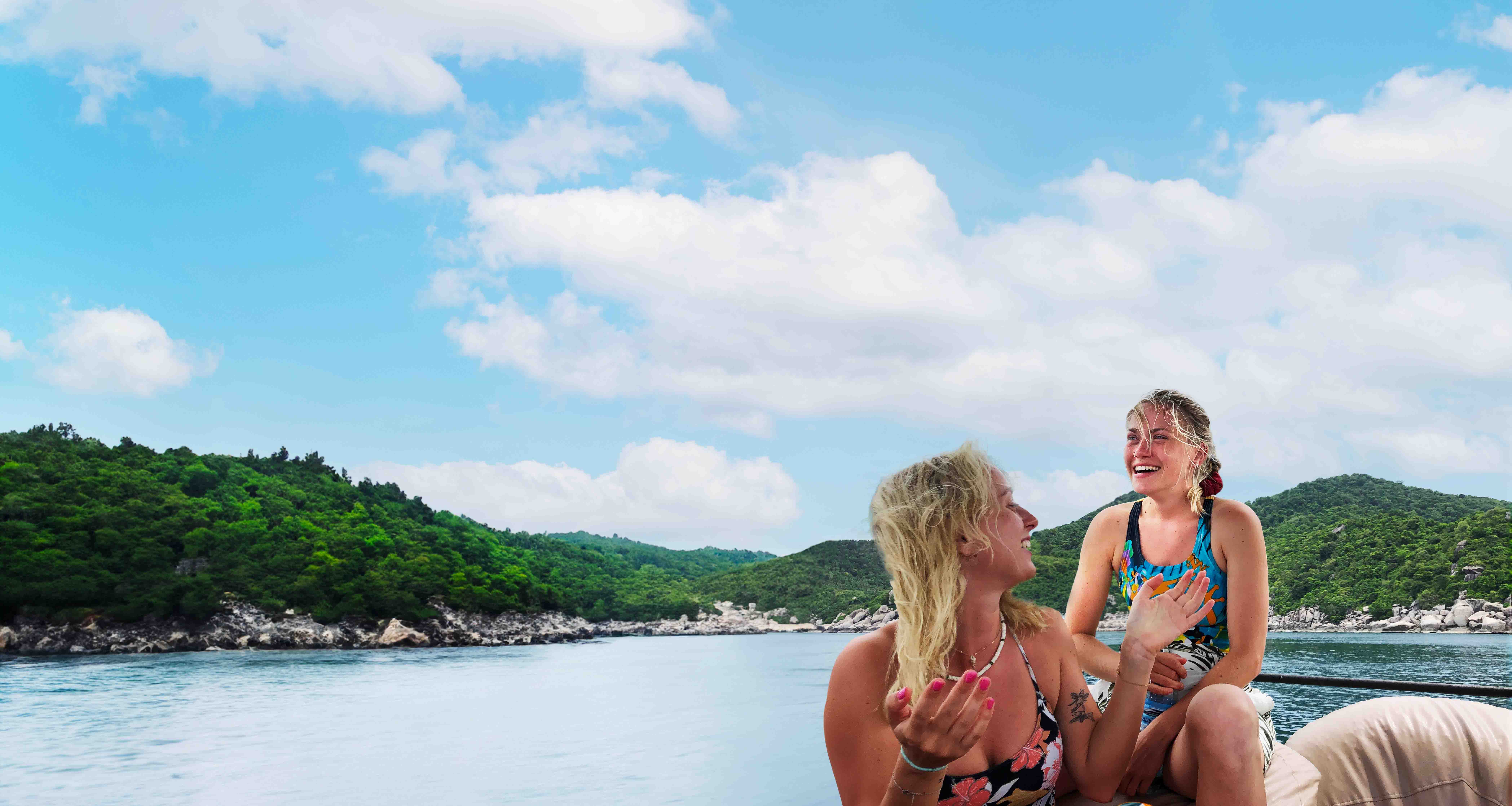Onze rondreizen bestaan uit kleine groepen internationale reizigers. Je reist van de gebaande paden af en bezoekt de hoogtepunten van een bestemming zonder met de massa mee te gaan. De Engelstalige gids zal je alle ins-en-outs vertellen tijdens de reis!
Kom langs en bespreek je reiswensen
Wat voor soort georganiseerde groepsreizen biedt KILROY aan?
Bij ons kun je kiezen uit ontzettend veel groepsreizen. Je kiest zelf hoe basic of luxe je het wilt: de accommodatie, het transport ter plaatse en sommige maaltijden zijn inbegrepen. Daarnaast is er vrije tijd om op eigen houtje de bestemming te verkennen.
Deze groepsrondreizen brengen je op de meest afgelegen plekken, maar ook langs de hoogtepunten van een bestemming. De ideale combinatie voor een complete reis of als een onderdeel van je langere wereldreis.
Heb je een speciale wens of gewoon een vraag, neem contact op met onze reisspecialisten.
Stuur een bericht
Groepsreizen met jongeren en backpackers
Wij geloven dat erop uit gaan en de wereld verkennen het leukst is om samen met andere mensen te doen! Onze groepsreizen zijn voor de avontuurlijke en jonge nieuwsgierige geesten die samen met andere gelijkgestemde reizigers erop de wereld willen ontdekken. Maar wij doen groepsreizen niet op de 'normale' manier, wij richten ons meer op kleine groepen reizigers met verschillende nationaliteiten, lokale gidsen die de verborgen pareltjes en de lokale cultuur kennen, en op voldoende vrije tijd voor zelfreflectie en jezelf beter te leren kennen. Deze groepen bestaan meestal uit een diverse groep reizigers van over de hele wereld. Er zijn geen vaste vertrekdata, we passen alles aan op basis van jouw ultieme droomreis. We hebben bijvoorbeeld groepsreizen gericht op jongeren tussen de 18 en 35 jaar waarbij je in hostels slaapt of groepsreizen met alle leeftijden, waar je een privekamer hebt. En alles hiertussenin!
Bespreek jouw wensen met ons
Kleine groepsavonturen
Onze groepsreizen die gericht zijn op kleine groepsavonturen zijn heel eenvoudig. Je past samen met ons je eigen reis aan en daar waar je dat wilt, brengen we je in contact met andere groepen gelijkgestemde backpackers. We werken samen met heel veel verschillende leveranciers die coole avontuurlijke tours over de hele wereld uitvoeren, dus we zijn ervan overtuigd dat we de juiste match voor je zullen vinden!
Deze kleine groepsavonturen kunnen van alles zijn en kunnen zo lang duren als jij maar wil, van een paar dagen tot enkele maanden. Hoe de reis eruit gaat zien en hoe lang, ligt helemaal aan jou. Misschien wil je je reis beginnen door in een groep te reizen en dan alleen verder te gaan, of misschien wil je gewoon je avontuur af en toe wat spannender maken door hier en daar nieuwe mensen te ontmoeten terwijl je op reis bent. We kunnen bijna alles overal ter wereld voor je regelen.
In het kort over de KILORY kleine groepsavonturen:
- Gehost door onze top notch partners
- Voor iedereen ouder dan 18
- Dagelijkse vertrekmogelijkheden
- Internationale groepen met mensen van over de hele wereld
- Geweldige combinatie en variate van avontuur en ontspanning
Een aantal van de avontuurlijke tours die in deze inspirerende routes zijn opgenomen, kun je ook hier terugvinden.
Ga op reis met leeftijdsgenoten én leer jezelf beter kennen
Re:discover zijn unieke groepsreizen met vaste vertrekdatum voor reizigers tussen de 25 en 35 jaar oud die voor een korte periode van 2 tot 4 weken weg willen. Als je graag een korte pauze wilt nemen van je dagelijkse bezigheden, maar tijdens je reis toch nieuwe vaardigheden wil opdoen in bijvoorbeeld fotografie, surfen of leren hoe je kunt overleven in het wild, dan is een RE:DISCOVER reis ideaal voor jou!
RE:DISCOVER geeft je meer dan 'alleen' avonturen buiten de gebaande paden. Het helpt je resetten, dingen in het leven heroverwegen, jezelf beter leren kennen en nieuwe inzichten over jezelf en je huidige levensfase te (her)ontdekken. Een RE:DISCOVER reis biedt je nieuwe vaardigheden, nieuwe vrienden en nieuwe perspectieven. Vergroot je kennis - zowel over jezelf als over een nieuw onderwerp of vaardigheid, en keer verfrist en vernieuwd terug naar huis met een boost van energie en zelfvertrouwen.
In het kort over RE:DISCOVER:
- Op maat gemaakte reizen met een specifiek thema voor de nieuwsgierige, grensverleggende en zielzoekende avonturiers tussen de 25-35 jaar
- De gemiddelde leeftijd: 27. De meeste deelnemers komen voornamelijk uit Noord-Europa.
- Duur: 2-4 weken
- Focus ligt op: persoonlijke groei, het leren van nieuwe vaardigheden en het ontmoeten van nieuwe mensen.
- Inbegrepen in alle RE:DISCOVER reizen: accommodatie, activiteiten en lokale gidsen





